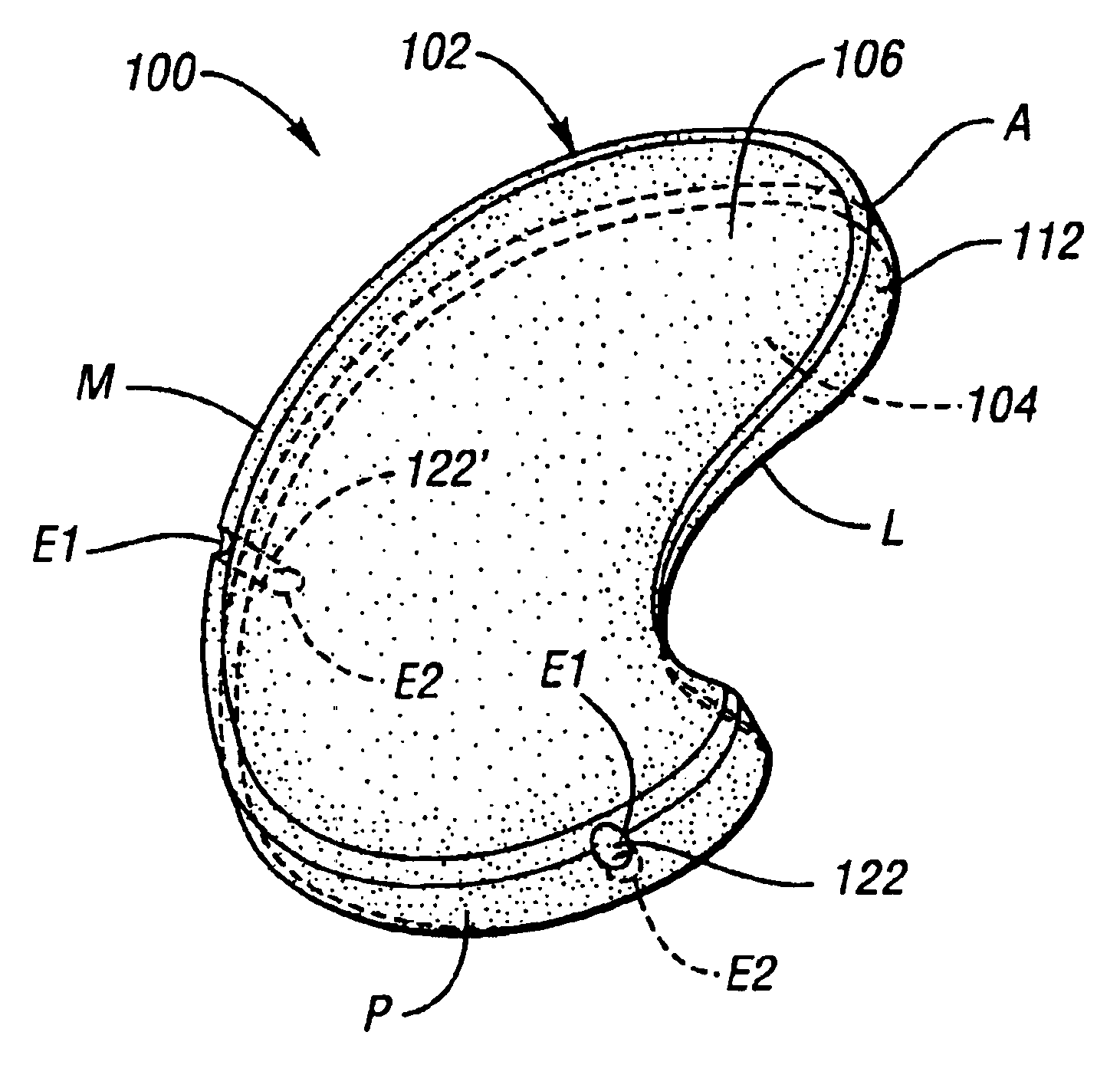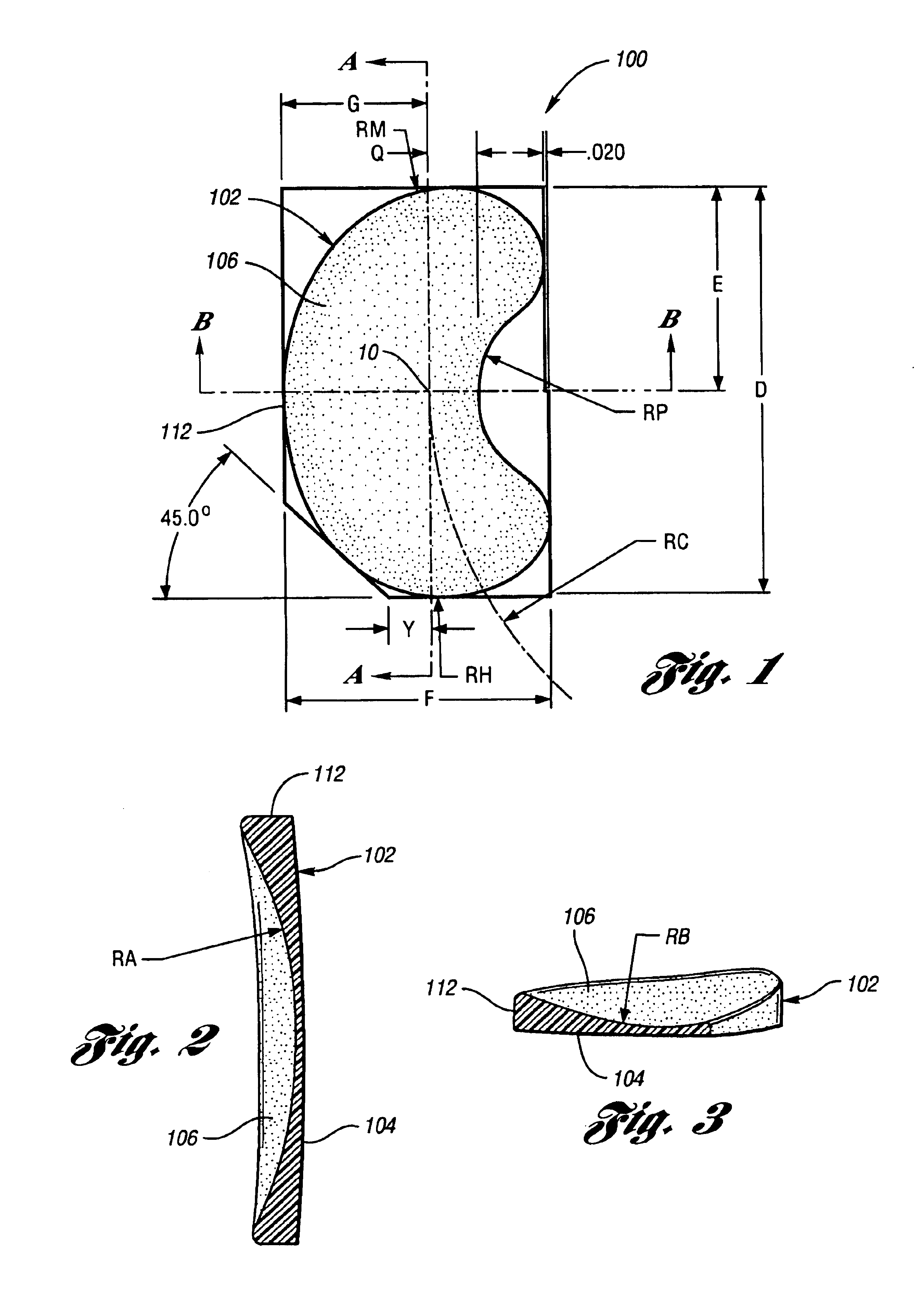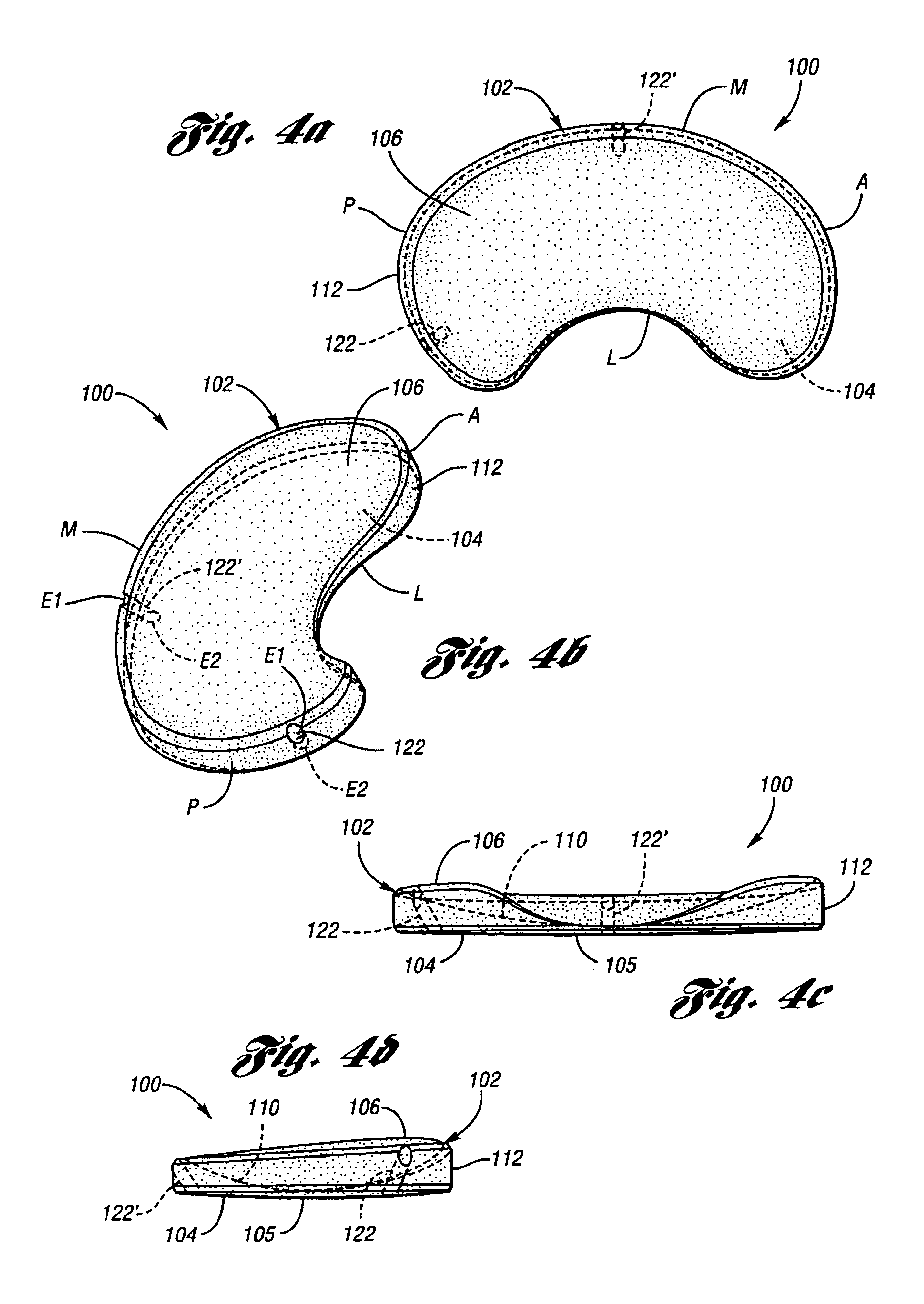Surgically implantable knee prosthesis having attachment apertures
a surgical implant and prosthesis technology, applied in the field of knee joint prosthesis, can solve the problems of chondromalacia, damage to the surface of the knee joint, degenerative tearing of the meniscal cartilage,
- Summary
- Abstract
- Description
- Claims
- Application Information
AI Technical Summary
Problems solved by technology
Method used
Image
Examples
Embodiment Construction
[0025]The present device is an implantable knee prosthesis in the form of a uni-compartmental interpositional spacer which, by effectively replacing worn articular material, restores the normal joint alignment and provides a congruent bearing surface for the femoral condyle to articulate against. Further, it essentially eliminates articulation against the tibial surface thereby preventing further degradation of the tibial surface. Degeneration of the femoral anatomy is significantly reduced because the conforming femoral surface of the device accommodates the complex shape of the femoral condyle in extension as well as in flexion. Insertion of the device is done via a 3 cm to 5 cm medial parapatella incision after arthroscopic debridement of the femoral and tibial cartilage and removal of medial meniscus toward the rim along the anterior, medial and posterior portions. No bone resection or mechanical fixation of the device is required. Only osteophytes which interfere with the devic...
PUM
| Property | Measurement | Unit |
|---|---|---|
| Thickness | aaaaa | aaaaa |
| Length | aaaaa | aaaaa |
| Dimension | aaaaa | aaaaa |
Abstract
Description
Claims
Application Information
 Login to View More
Login to View More - R&D
- Intellectual Property
- Life Sciences
- Materials
- Tech Scout
- Unparalleled Data Quality
- Higher Quality Content
- 60% Fewer Hallucinations
Browse by: Latest US Patents, China's latest patents, Technical Efficacy Thesaurus, Application Domain, Technology Topic, Popular Technical Reports.
© 2025 PatSnap. All rights reserved.Legal|Privacy policy|Modern Slavery Act Transparency Statement|Sitemap|About US| Contact US: help@patsnap.com



